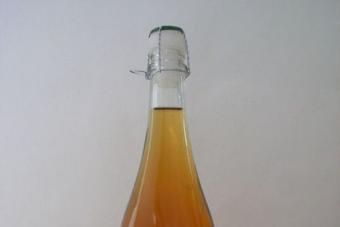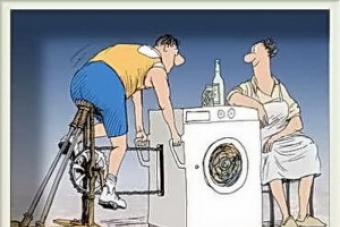Pasternatsky's symptom is a sign of nephrological pathologies, which is a combination of pain in the kidney area with slight tapping of the lumbar region and an increase in the level (appearance) of red blood cells in the urine subsequently.
general information
Pasternatsky's symptom is named after the Russian doctor F.I. Pasternatsky, who developed a method of palpation examination, which allows diagnosing a number of kidney diseases.
Pasternatsky's symptom is detected by tapping on the lower back in the projection area of the kidneys. Three methods have been described:
- The patient is standing or sitting. The doctor places his hand on his lower back and strikes it lightly with the fist of his other hand.
- The patient is sitting. The doctor, without strong pressure, taps his fingers on the area located on the border of the lower back and the lower edge of the twelfth rib.
- The patient lies on his back. The doctor puts his hand under his back, places it on the kidney area and makes a few pushes.
All manipulations are carried out on both sides. If, due to tapping, pain in one or two kidneys increases, the doctor notes Pasternatsky's symptom is positive on the right, left, or both sides. If the patient does not feel discomfort, then Pasternatsky's symptom is negative.
The classic examination technique according to Pasternatsky includes a urine test after palpation. With a positive symptom, it shows the appearance or a short-term increase in the level of red blood cells. Without this sign, pain when tapping (a symptom of tapping) can indicate not only kidney disease, but also pathology of the musculoskeletal system or gastrointestinal tract.
Causes
A positive symptom of Pasternatsky is detected in diseases such as:
- acute and chronic pyelonephritis - an inflammatory process that affects the pelvis, calyx and kidney parenchyma;
- apostematous nephritis - a purulent kidney disease caused by infectious foci in other organs;
- paranephritis - purulent inflammation of the perirenal tissue;
- nephrolithiasis - the formation of stones in the urinary tract;
- kidney tumors - benign (cyst, adenoma, angiolipoma, fibroma) and cancerous (adenocarcinoma, renal cell carcinoma) formations;
- glomerulonephritis is a disease involving glomeruli - renal glomeruli.
All these pathologies can affect one or both kidneys, so Pasternatsky's symptom can be positive on one or both sides.
If, after the examination, the doctor determined that Pasternatsky's symptom is negative on both sides, this does not mean the absence of the disease. The reasons for a false negative result are abnormal localization of organs and a latent chronic inflammatory process.
Diagnostics
A positive symptom of Pasternatsky is not a sufficient basis for making a diagnosis. In addition to palpation examination, other methods are used:
- Collecting an anamnesis in order to determine the signs of the disease.
- General and biochemical blood tests.
- Urinalysis - general, samples according to Nechiporenko and Zimnitsky.
- Ultrasound scan of the kidneys.
- X-ray studies.
- MRI, CT.
- Biopsy (for tumors).
All these studies provide information about the state of the structural elements of the kidneys, their functioning and the presence of neoplasms in them.
Treatment
Therapy of diseases in which a positive symptom of Pasternatsky is found depends on the diagnosis and the general condition of the patient.
Pyelonephritis is treated with antibiotics - penicillins, aminoglycosides, fluoroquinolones, cephalosporins. Painkillers, anti-inflammatory and diuretic drugs are also prescribed.
Apostematous nephritis and paranephritis require high doses of antibiotics. If medicines do not help, an operation is performed to open the abscesses.
With nephrolithiasis, a diet is prescribed, depending on the type of stones. Medicines, lithotripsy, or surgery may be used to remove them.
The tactics of treating kidney tumors is determined by their type. Small benign formations that do not disturb patients are not amenable to therapy. If there are complaints, then they are operated on. Cancer tumors are removed, sometimes along with the kidney. In inoperable cases, anticancer drug treatment is prescribed.
Forecast
If a positive symptom of Pasternatsky is detected, the prognosis depends on the specifics of the disease.
The prognosis for acute pyelonephritis and paranephritis with timely treatment is favorable. Chronic forms of diseases require constant maintenance therapy.
Apostematous nephritis and cancerous tumors in many cases become the reasons for the removal of one of the kidneys. With these pathologies, the risk of death is high.
Conservative treatment of nephrolithiasis most often has an unfavorable prognosis: the stones continue to increase in size. Their surgical removal leads to an improvement in the condition, but the risk of recurrence remains.
Pasternatsky symptom I
Pasternatsky symptom (F.I. Pasternatsky, domestic, climatologist and balneologist, 1845-1902)
the appearance of pain with a slight tapping in the lumbar region. P.'s definition with. is mandatory for general clinical examination of the patient. The symptom is detected by applying gentle pushes with the edge of the palm or the ends of the fingers in the costal-lumbar angle on the right and left. It is better to define P. with. in the position of the patient standing or sitting, but it is also possible in the position of the patient on the back (in this case, the hand is brought under the lumbar region and shocks are applied from the bottom up). Pasternatsky's symptom is positive in many inflammatory and non-inflammatory diseases and damage to the kidneys and perirenal tissue. Positive P. with. may also be due to a disease of adjacent organs and tissues (lumbar muscles, ribs, vertebrae, pleura, liver, gallbladder, pancreas, intestines, appendix, spleen, large vessels). P. s. may be negative in kidney disease if they are located outside the lumbar region, for example, with pelvic dystopia. soreness in the kidney area when tapping in the lumbar region; a sign of pyelonephritis, nephrolithiasis, hydronephrosis, paranephritis.
1. Small medical encyclopedia. - M.: Medical Encyclopedia. 1991-96 2. First aid. - M.: Great Russian Encyclopedia. 1994 3. Encyclopedic dictionary of medical terms. - M.: Soviet Encyclopedia. - 1982-1984.
See what the "Pasternatsky symptom" is in other dictionaries:
- (F. I. Pasternatsky, 1845 1902, father internist) soreness in the kidney area when tapping in the lumbar region; a sign of pyelonephritis, nephrolithiasis, hydronephrosis, paranephritis ... Big Medical Dictionary
- (named after the Russian therapist F. I. Pasternatsky, 1845–1902) - a sign of kidney disease (in particular, renal colic): soreness in the kidney area when tapping in the lumbar region, followed by a short-term appearance or ... ... Wikipedia
I Examination of the patient Examination of the patient is a complex of studies aimed at identifying the individual characteristics of the patient, establishing the diagnosis of the disease, substantiating rational treatment, determining the prognosis. The volume of research at O ... Medical Encyclopedia
I Colic (colica; Greek kōlikē intestinal disease) is a sudden attack of sharp cramping pains in the abdomen. There are biliary, pancreatic, renal and intestinal K: Some authors also distinguish appendicular colic, which is more often ... ... Medical Encyclopedia
I Pyelonephritis (pyelonephritis; Greek pyelos pelvis + nephritis (Jades)) is a non-specific infectious inflammatory disease of the kidneys with a primary lesion of the interstitial tissue, pelvis and calyces. Distinguish between acute and chronic, ... ... Medical Encyclopedia
paranephritis- PARANEPHRITIS, paranephritis (from the Greek. para about and nephron kidney), inflammation of the perirenal tissue (fatty capsule paranephron); first described in 1839 (Ray er). In 1896, Kuster (Kuster), on the basis of a large casuistic collected by him ... ... Big Medical Encyclopedia
I Appendicitis (appendicitis; lat. appendix, appendicis appendage + itis) inflammation of the appendix of the caecum; one of the most common surgical diseases of the abdominal cavity. Etiology and pathogenesis. In the pathological process, as ... ... Medical Encyclopedia
CRIMEAN-CONGO HEMORRHAGIC FEVER- honey. Hemorrhagic Crimean Congo fever is an acute infectious disease that occurs with high fever, characterized by a two-wave temperature curve, severe intoxication, headache and muscle pain, bleeding, ... ... Disease Handbook
- (renes) a paired excretory and endocrine organ that, through the function of urination, regulates the chemical homeostasis of the body. ANATOMO PHYSIOLOGICAL OUTLINE The kidneys are located in the retroperitoneal space (Retroperitoneal space) on ... ... Medical Encyclopedia
pyelonephritis- honey. Pyelonephritis is a nonspecific infectious disease of the kidneys that affects the renal parenchyma (mainly interstitial tissue), pelvis and calyces. It is often bilateral. The incidence of acute pyelonephritis is 15.7 ... ... Disease Handbook
Increasingly, patients come to the doctor with complaints of lumbar pain, which reflexively spread to the area of the legs and small pelvis. Many people, out of ignorance and inexperience, attribute their condition to osteochondrosis or sciatica and try to get rid of their self-diagnosis, exacerbating the situation.
In most cases, discomfort indicates kidney disease. In order to correctly diagnose, a competent doctor is required to carry out a number of procedures, including a test (symptom) of Pasternatsky. Pain in the lower back can be a sign of various pathologies, in particular, nearby organs.
Definition of SP
This is a research method that allows you to identify certain pathologies of the kidneys of different stages (chronic, acute). The information content of this method is based not only on tapping and patting in the area of \u200b\u200bthe ribs, but also on a urine sample. With existing diseases, the analysis will have an increased number of erythrocytes and leukocytes, a protein may also be present (indicates pyelonephritis).
Positive Pasternatsky's symptom does not always indicate the presence of urolithiasis. It occurs with a disease of the musculoskeletal system. Localization of pain occurs in the spinal column, increases with physical activity, lifting weights and movement. Advanced diagnostics will be required: consultation with an orthopedist, neurologist, CT and MRI.
Definition technique

It is impossible to independently evaluate Pasternatsky's symptom, this should only be done by a specialist. The method is carried out at rest in a sitting or standing position. With the fingers of the right hand, the doctor lightly taps the area of the ribs, thus assessing the intensity and localization of the pain syndrome. If the sensations are too pronounced, then a positive symptom is put. In addition, urine is taken for microscopic examination.
Symptom of Pasternatsky: a sign of pathologies
Often a positive result indicates the presence of an inflammatory process in the urinary tract and kidneys. Pain can spread throughout the spinal column, while there is no numbness of the skin and high temperature. Pasternatsky's symptom partly helps in making a diagnosis, it is necessary to conduct a blood test, urine test and instrumental examination.
On examination, the specialist observes accompanying signs, such as puffiness of the face. Puffiness appears at any stage of pyelonephritis. The chronic stage is characterized by hypertension, fatigue, fever. In pregnant women, the elderly and patients with diabetes, the disease is extremely difficult - severe pain in the back and when urinating, the presence of blood and pus in the urine.
It should be noted that such sensations appear in diseases of the abdominal cavity (pancreas, gallbladder, etc.). Sometimes they point to a pathological process that occurs in the lumbar muscles, gastrointestinal tract, spleen and blood vessels.
Should I be worried if Pasternatsky's symptom is negative?

It is generally accepted that if, with weak blows or a pat in the area of the ribs, the pain syndrome is absent or does not increase, then renal colic and inflammation are excluded. In fact, this is an erroneous opinion. Many chronic diseases are in a latent form and do not give themselves away until a certain point, so a more thorough diagnosis is required:
X-ray examination;
Ultrasound of the bladder and kidneys for inflammation, stones and other abnormalities;
Samples for blood and urine.
Do not ignore the pain and discomfort in the spine and hope for a sudden cure. It is advisable to seek help from a therapist.
Percussion over the region of the kidneys, covered in front by intestinal loops, normally gives a tympanic sound. However, with a significant increase in the kidney, it moves the intestinal loops away, as a result of which a dull sound may appear above it during percussion.
In the diagnosis of many kidney diseases, the tapping method is used - the definition of Pasternatsky's symptom. Assessing this symptom, the doctor puts his left hand on the area of \u200b\u200bthe XII rib to the right and left of the spine and with the edge of the palm (or the tips of bent fingers) of the right hand inflicts short, gentle blows on it. Pasternatsky's symptom is usually determined in the patient's standing or sitting position, however, if necessary, it can also be checked in the patient's lying position, putting his hands under the lumbar region and applying them with jolts.
Depending on whether the patient has pain at the time of the blows and how intense they are, Pasternatsky's symptom is regarded as negative, weakly positive, positive and sharply positive. A positive symptom of Pasternatsky is observed in urolithiasis (especially at the time of renal colic), acute pyelonephritis, paranephritis, etc. However, it should be borne in mind that a positive symptom of Pasternatsky can be observed in osteochondrosis of the spine with severe radicular syndrome, diseases of the ribs, lumbar muscles, and sometimes in diseases of the abdominal organs (gall bladder, pancreas, etc.).
The percussion method is also used to determine the position of the upper border of the bladder. At the same time, placing the finger-plessimeter horizontally, percussion is carried out along the midline in the direction from top to bottom, starting approximately from the level of the navel. In cases where the bladder is empty, the tympanic sound persists up to the pubic symphysis. When the bladder is full, percussion in the region of its upper border, a transition of a tympanic sound into a dull one is detected. The protrusion of the upper border of the bladder above the pubis is noted in cm.
Description of the results of the study of the urinary system in the history of the disease in the absence of any pathological changes is usually quite brief: Pasternatsky's symptom is negative on both sides. The bladder percussion does not protrude above the pubic symphysis.
Section 3. Auscultation Auscultation. Question history.
Auscultation (from the Latin auscultatio - listening) is listening to phenomena in the body perceived by our ear or directly applied to the body, or with the help of tools: a stethoscope, phonendoscope, etc. Thus, auscultation deals with sounds that are formed in the body on their own, in contrast to percussion, where the doctor studies sounds that he specifically caused.
Auscultation was known in ancient times. So, already Hippocrates heard the sound of splashing during a concussion of the chest - succussio Hippocratis. In the future, auscultation is mentioned in the writings of the Greek physician Areteus; in the 17th century it was handled by Hooke; however, it was René Laennec who first developed this method in detail and scientifically. That is why the history of auscultation, as a scientifically based clinical method for examining a person, dates back to 1818, when the work of Laennec entitled "Traite de l'auscultation mediate et des poumons et du coeur" appeared.
There are two types of auscultation: direct, by applying the ear to the body, and mediocre - with the help of devices of various types and types, bearing the general name of stethoscopes.
For the first time, Laennec began to use a stethoscope, and his first model was a tube made of rolled paper. Laennec himself believed that the stethoscope not only conducts sound, but also amplifies it. When it became known that an ordinary stethoscope is only a conductor of sound, stethoscopes began to be made that amplify sound by resonance. Such stethoscopes with resonators in the form of a hollow capsule with an amplifying membrane, which is applied to the body of the subject, are called phonendoscopes.
The question of which auscultation to give preference to - mediocre or direct was repeatedly discussed. Obviously, it is necessary to give preference to the first, because, firstly, it is more hygienic, in particular in patients who are contagious and untidy; secondly, it makes it possible to accurately localize auscultatory phenomena; finally, not all places can be heard directly with the ear, such as the pulmonary apices.
Positive symptom of Pasternatsky
1. Urinalysis:
A) Leukocyturia;
B) Bacteriuria.
2. Bacteriological examination of urine:
Sowing urine on nutrient media, determining the sensitivity of the isolated microflora to antibiotics.
3. Proteinuria does not exceed 2 g/day.
1. Ultrasound, intravenous urography - diagnosing the expansion of the pelvis, the outlines of which become uneven.
2. Plain radiography of the genitourinary system - (there may be the presence of stones).
3. One-sidedness (damage to one kidney) or asymmetry (damage to both kidneys) is confirmed by ultrasound, renography, scanning.
7. Syndrome of renal colic.
A syndrome observed in a number of kidney diseases, the main manifestation of which is acute pain in the lumbar region.
Etiology and pathogenesis.
The causes of colic are nephrolithiasis, hydronephrosis, nephroptosis, obstruction of the ureter by a blood clot, caseous masses in kidney tuberculosis, a tumor, and polycystic kidney disease. The leading role in the development of pain belongs to spasm of the urinary tract with their ischemia, stretching of the fibrous capsule of the kidney and pelvic-renal reflux.
Pain most often occurs suddenly after intense physical activity (running, walking);
After taking a large amount of liquid (beer);
Driving on bumpy road.
Most often, pain is localized in the lumbar region. Along with this localization, pain can also be in the abdomen (sometimes resembling acute appendicitis) or in the region of the right or left hypochondrium. Localization of pain depends on the level of damage to the ureter. The pains are cutting, sharp. Accompanied by increased urge to urinate.
There are periods of calm and exacerbation.
Complaints:
Pain radiates along the ureter towards the bladder and genital organs, into the abdomen and hypochondrium;
Change in the color of urine-red ("meat slop") due to the passage of the stone through the ureteral mucosa;
Rarely, reflex anuria can be observed.
History of present illness:
Establish a connection with gout, kidney injuries, etc .;
Clarify the possible presence in the past of diseases of the kidneys and urinary tract - pyelonephritis, cystitis, as well as symptoms suspicious of such - bloody urine, dysuric phenomena.
Clinical Study
General inspection.
The position of the patient in bed.
Forced - patients rush about in bed, changing position all the time.
The skin is normal.
Edema, language changes, convulsions are absent.
local inspection
Inspection of the abdominal wall.
When a stone passes through the ureter, reflex bloating, stool retention (defecation) can be observed.
Percussion.
Lumbar region.
Pasternatsky's symptom is positive.
Analysis of urine:
Red blood cells and protein are found. Often the stone is excreted in the urine.
Instrumental research.
1. Plain radiograph of the abdominal organs (stones - phosphates, oxalates, carbonates) - with a stone diameter of more than 5 mm.
Ultrasound - expansion of the cups, pelvis and ureters.
Intravenous excretory urography (urate or X-ray negative stones).
CT is necessary for differential diagnosis between stones.
Test tasks.
Test number 1.
What symptom is not typical for CRF?
A. Pericardial rub
B. Scratching, skin itching.
C. Visual impairment
D. Nasal, gastrointestinal bleeding
Test #2
Which symptom is not characteristic of kidney and urinary tract disease?
A. Increased blood pressure
B. Pain in the lumbar region
C. Visual impairment
D. Puffiness of the face
E. Cyanosis of visible mucous membranes and skin
Test #3
1. What sign is not typical for ureteral colic?
A. Positive Pasternatsky's sign
B. Irradiation of pain down the abdomen
C. Dysuria
D. Pain in the lumbar region
E. Stopping pain after vomiting
Test #4
Pain syndrome in nephritic syndrome is caused by: A. violation of urine outflow B. inflammatory edema of the ureter C. distension of the renal pelvis D. spastic contraction of the ureter E. distension of the renal capsule
Test #5
All of the following are characteristic of nephrotic syndrome, except for one: A. Massive edema B. Oliguria C. Hyperlipidemia D. Hypoproteinemia E. Increased albumin-globulin ratio
Test number 6.
Nephrotic syndrome is characterized by all of the following with the only exception: A. Facial edema in the morning B. Increased blood pressure C. Polyuria D. Nocturia E. Increased relative density of urine
Test #7 An attack of very severe pain in the lumbar region, usually unilateral, with irradiation along the ureter, in the groin, weakening after the appointment of antispasmodics, is characteristic of one of the following diseases: A. Nephritic syndrome B. Renal pelvis syndrome C. Arterial renal hypertension D. Renal colic E. Nephrotic syndrome
Test #8 The predominance of nocturnal diuresis over daytime is called: A. Oliguria B. Anuria C. Nocturia
D. Pollakiuria E. Stranguria
Test #9 Daily proteinuria over 3.5 g is characteristic of one of the following diseases: A. Acute pyelonephritis B. Nephrotic syndrome C. Uremia D. Acute renal failure E. Fever
Test #10 Bacteriuria, leukocyturia, fever, chills, dysuric disorders are characteristic of: A. Nephritic syndrome B. Renal colic syndrome C. Renal pelvis syndrome D. Kidney tumors E. Nephrotic syndrome
Situational tasks
Task #1
A 53-year-old patient complains of pain in the lumbar region on the left, subfebrile condition for two weeks. The examination revealed blood pressure of 120/80 mm Hg. Art., pulse 76 in 1 min. Pasternatsky's symptom is positive, the kidneys are not palpable. In urine - relative density 1.019, leukocytes - 50-60 in the field of view. Ultrasound of the abdominal cavity - expansion of the pelvis and deformation of the cups in the left kidney.
What syndrome are we talking about?
What is an increase in the number of white blood cells in the urine called?
What additional method of examination should be carried out for the patient to clarify the quantitative content of leukocytes, erythrocytes and casts in the urine?
Task #2
The patient is 63 years old. He complained about the appearance of edema of the face, lower extremities.
On examination: pale skin, no cyanosis, swelling of the face, lower extremities, torso. They are soft and move easily. BP - 120/70 mm Hg, pulse - 78 beats in 1 minute. The liver is not enlarged, Pleshe's symptom (-). Urinalysis: relative density - 1.035, protein - 4.3 g/l, crystals of cholesterol esters.
2. Loss, most often of which proteins in the urine is observed in this syndrome?
3. What changes in lipid metabolism are observed in the biochemical analysis of blood?
Task #3
A 17-year-old patient, 2 weeks after suffering a sore throat, developed aching pains in the lower back, headaches, urine of the color of "meat slops".
On examination: pale skin, eyelid pastosity, no cyanosis. Blood pressure 160/100 mm Hg. Art., pulse -60 beats per minute. Urine: reddish in color, relative density - 1.020, protein - 2.0 g / l, leukocytes 1-2 in the field of view, erythrocytes - up to 50 in the field of view.
What syndrome are we talking about?
What functional units of the kidneys are affected in this disease?
How much blood is needed for the appearance of a symptom - gross hematuria.
Task #4
A 56-year-old patient has been suffering from chronic glomerulonephritis for a long time. I felt well and continued to work. Deterioration over the last 3 months, when edema on the face began to appear, weakness, headaches, nausea, sometimes vomiting, diarrhea, skin itching appeared.
On examination: pale skin, swelling of the face, lower extremities, no cyanosis. BP -150/110 mm Hg. Art., pulse 66 beats per minute. In the field of hair follicles - "white dust". The smell of ammonia from the mouth. The liver is not enlarged. In urine: relative density -1.011, protein -0.2 g/l, leukocytes -2-4 in the field of view, erythrocytes -2-4 in the field of view. Blood test: hemoglobin - 90 g / l, creatinine - 560 μmol / l.
What syndrome are we talking about?
The nature of dysproteinemia?
How to explain the presence of nausea, sometimes vomiting, diarrhea in a patient?
Task number 5
The patient is 38 years old. 4 years suffering from gouty arthritis (big toe of the left foot). The last time he was examined was 2 years ago - no pathology was found in the internal organs. Suddenly, in public transport, intense acute pain appeared in the lower back on the right, radiating to the inguinal region. Hospitalized.
On examination: excited, tossing about in bed, unable to find a place for himself, frequent urge to urinate. Sharply positive symptom of Pasternatsky on the right, blood in the urine, soreness of the ureteral points on the right.
What syndrome should be considered?
What factors are provoking?
Specify the cause of gross hematuria in the patient?
Task number 6
The patient has a sharp weakness, headache, increased blood pressure, blurred vision, swelling of the face, decreased urine output and a change in its color. I fell seriously ill. One can suspect: A. Renal pelvis syndrome B. Renal colic C. Nephritic syndrome D. Nephrotic syndrome E. Uremia
Task number 7
Patient V., 55 years old, has an acute sharp pain in the lumbar region on the right, the pain radiates to the lower abdomen.
Repeated vomiting is noted, which does not lead to relief of the general condition. The pains then weaken, then sharply increase. The patient's body temperature is 36.7. The patient complains of frequent urge to urinate. Urine of the "meat slop" type. Pasternatsky's symptom is sharply positive on the right.
A. Syndrome of the renal pelvis.
B. Nephritic syndrome.
C. Nephrotic syndrome.
D. Renal colic.
Task number 8
The patient is a driver by profession, after cooling he began to notice dull, aching pains in the lower back, a decrease in urine output, headaches, and nausea.
On examination: lethargy, lethargy. Puffy face. The skin is pale.
Urine "the color of meat slops." Pulse 62 beats per minute. Arterial pressure 170/100 mm. rt. pillar. Pasternatsky's symptom is positive on both sides.
Which of the following syndromes is characterized by this clinical picture?
A. Syndrome of the renal pelvis.
B. Nephritic syndrome.
C. Nephrotic syndrome.
D. Renal colic.
E. Syndrome of renal hypertension.
Task number 9.
Patient S., aged 58, complains of headaches, drowsiness, dizziness, severe weakness, dull aching pain in the lumbar region. He considers himself ill for the last 10 years, worsening for the last 2 months.
About - but: The smell of ammonia from the mouth is determined. The skin is pale. High levels of creatinine in the blood. Blood pressure 210/110 mm Hg. pillar. On auscultation, the accent of the 2nd tone on the aorta is heard.
Which of the following syndromes is characterized by this clinical picture?
A. Syndrome of the renal pelvis.
B. Nephritic syndrome
D. Renal colic.
E. Syndrome of renal hypertension.
Task number 10.
A 35-year-old patient fell ill with follicular tonsillitis and started taking ampicillin. At the end of the 2nd week, she began to notice a change in the color of urine in the form of "meat slops", headaches, a sharp decrease in vision, and urine output decreased. Arterial pressure increased to 240/115 mmHg. There were massive swelling of the face, sacrum, lower extremities.
At the end of the month, the edema gradually disappeared, and blood pressure returned to normal.
Which of the following syndromes is characterized by this clinical picture?
A. Syndrome of the renal pelvis.
B. Nephritic syndrome
C. Nephrotic syndrome with chronic renal failure.
D. Renal colic.
E. Syndrome of renal hypertension.
Answers to tests:
Test No. 1-E
Test No. 2-E
Test No. 3 - E
Test No. 4 - E
Test No. 5 - E
Test No. 6 - E
Test #7 - D
Test #8 - C
Test #9 - B
Test #10-C
Answers to clinical situational tasks
Task #1
1. Syndrome of the renal pelvis.
2. Leukocyturia (pyuria)
3. Urinalysis according to Nechiporenko.
Task #2
1. Nephrotic syndrome.
2. Albumin
3. Hyperlipidemia (hypercholesterolemia and hypertriglyceridemia)
Task #3
1. Nephritic syndrome.
2. Glomeruli of the kidneys.
3. More than 1 ml of blood in 1 liter of urine.
Task #4
1. Syndrome of chronic renal failure (CRF)?
2. Dysproteinemia (hyper-alpha 2-globulinemia, hypo-gamma-
globulinemia)
3. Removal of nitrogenous wastes through the gastrointestinal tract.
Task number 5
1. Renal colic.
2. Public transport (shaking)
3. Injury to the urinary tract mucosa
Task number 6
Task number 7
Task number 8
Task number 9





